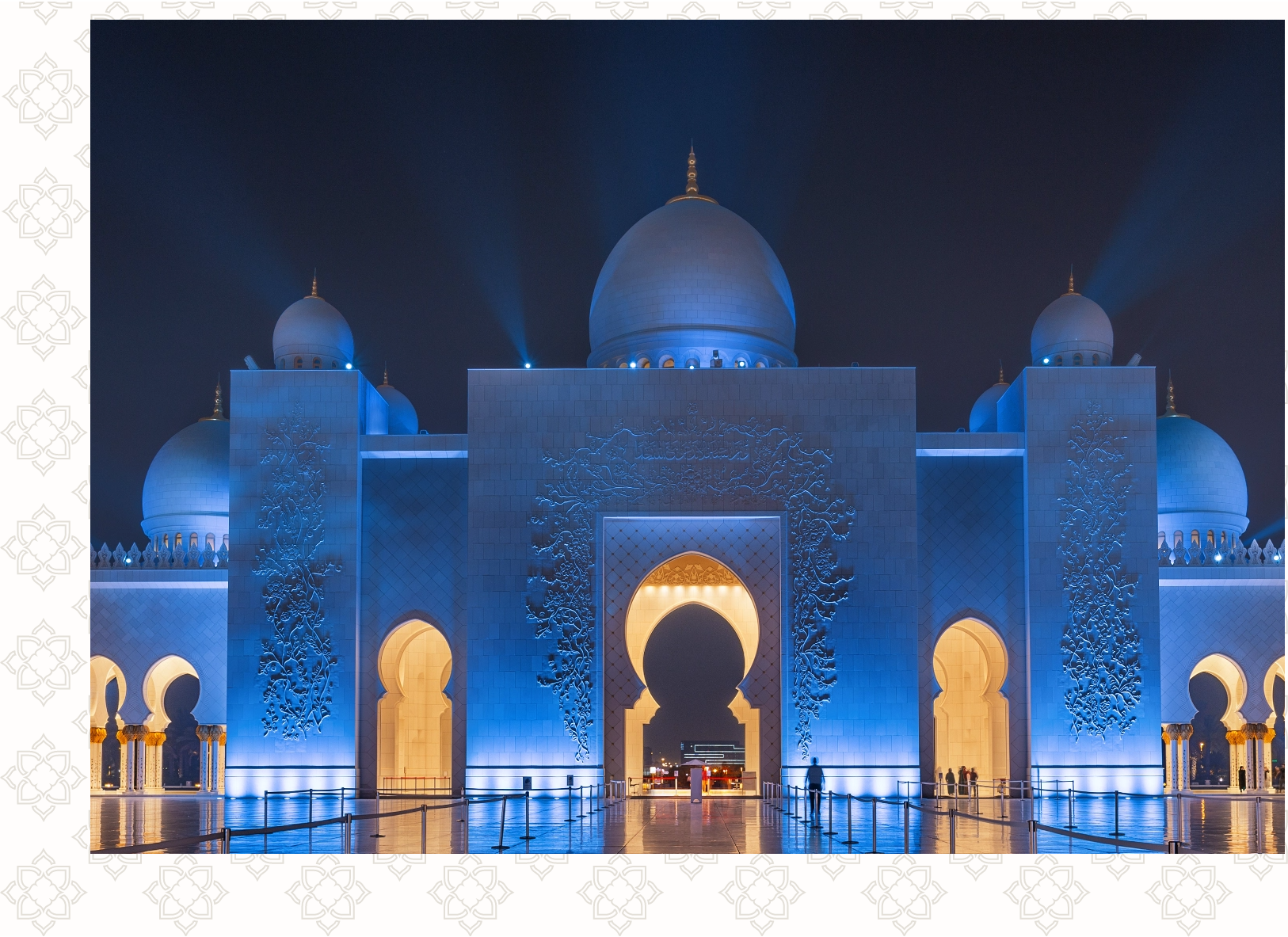Overview

Visitor's Journey
The Domes
The White Marble
The Minarets
The Courtyard
The Columns
Reflective Pools
The Lunar Illuminations
The Carpet
The Chandeliers
The Mihrab
The Minbar
The Al Noor Foyer
The Main Prayer Hall
The Interior Columns
The Qibla Wall
The Clocks
The Interior Walls
The Glass Doors

The Lunar Illuminations
The mosque's lunar lighting system was uniquely designed to reflect the lunar cycle, projected onto the mosque's external surfaces and the illumination varies intensity and brightness throughout the Hijri month according to the moon's position and stage.
Soft undulating clouds of a bluish color are projected onto the mosque's white marble external walls, including the façade and domes. Each day appears slightly different from the next as the lighting cycle commences with darker clouds when the month is in its early stages, and the moon is a small crescent. As the moon progresses through its cycle and becomes a full moon, the lighting effect becomes more brilliant.
This concept of marking time and important events by the moon's phases is a phenomenon shared across many civilizations and cultures, such as the Hebrew, Chinese, Japanese Korean, and Hindu lunar calendars, further highlighting the commonalities between cultures.
More than 840 lighting units are distributed around the mosque, projecting uniform precise rays. In addition, 22 light towers consisting of 10 to 13 light projectors that help achieve this creative effect.













 Home
Home